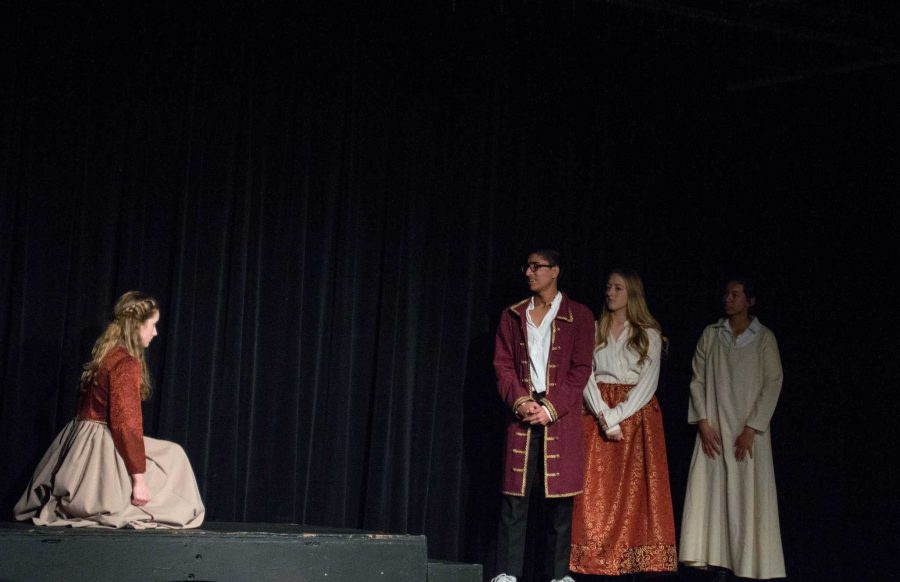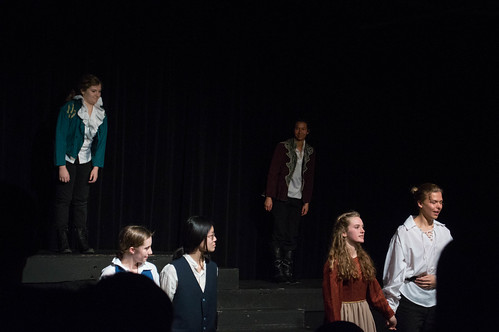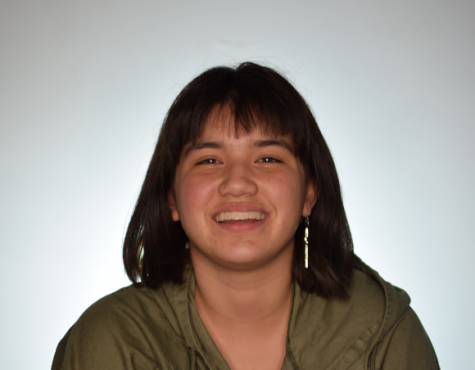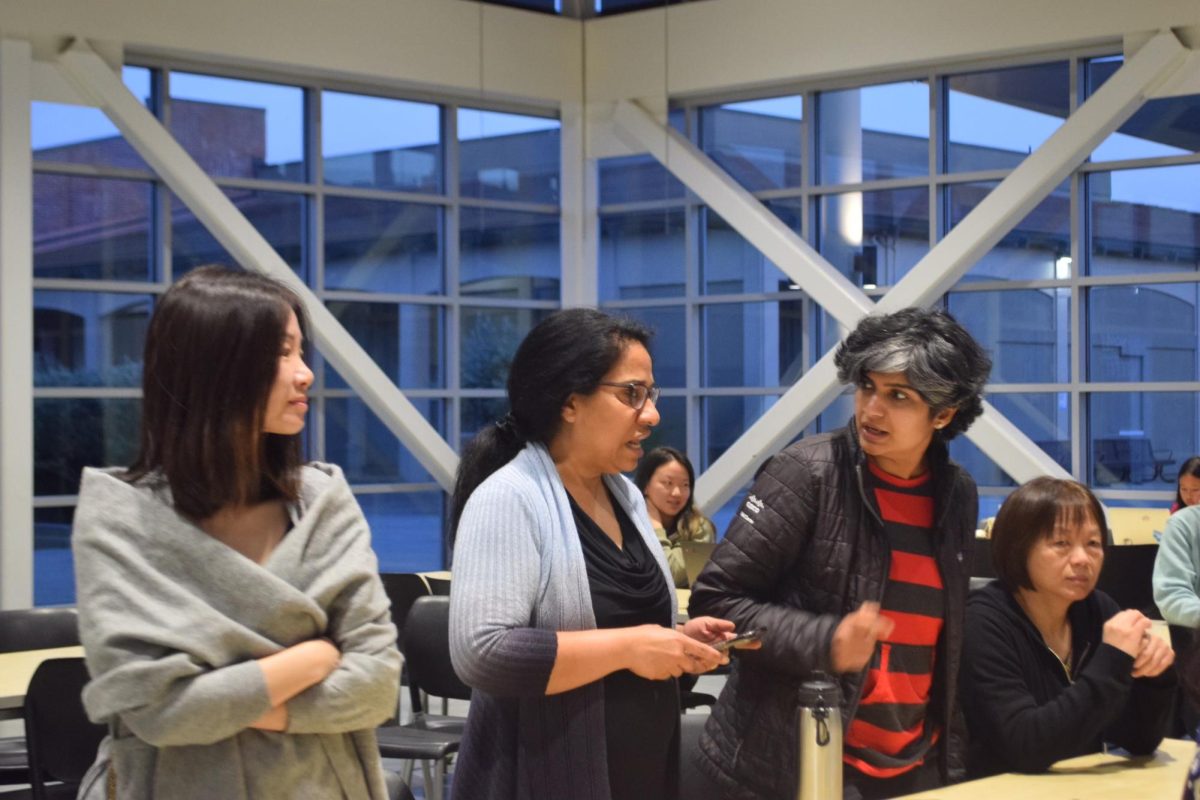Cowritten by Vivian Chiang
Sophomore Kayleen Nordyke comes down from the technology booth in a flaming red dress, short in the front, high in the back. The click of her heels hits the floor as she walks to the center of the room. She turns to face the audience, full of freshman classes, and starts her speech. Her face shows that she’s still nervous, although she’s been up on stage six times already that day.
She turns to the audience, each seat overflowing with students. She looks up to the loft above her, and sees the eyes of her fellow classmates cheering her on with their faces full of smiles. She finally turns back to the booth.
“Hello everyone, thank you for coming to watch my show — I mean our show,” Nordyke said.
The crowd laughs and suddenly the tension in the room fades away. She takes a deep breath and continues.
“My name is Kayleen Nordyke and I am the director of Romeo and Juliet,” Nordyke said.
She breezes through her speech, and at the end, the audience claps and the lights dim away. The stage manager flicks a key on the light board, starting the spotlight.
So on Feb. 26th, at the beginning of seventh period, Advanced Drama’s rendition of Romeo and Juliet begins.
And the crowd, which was so loud before, begins to lower their voices into silence.
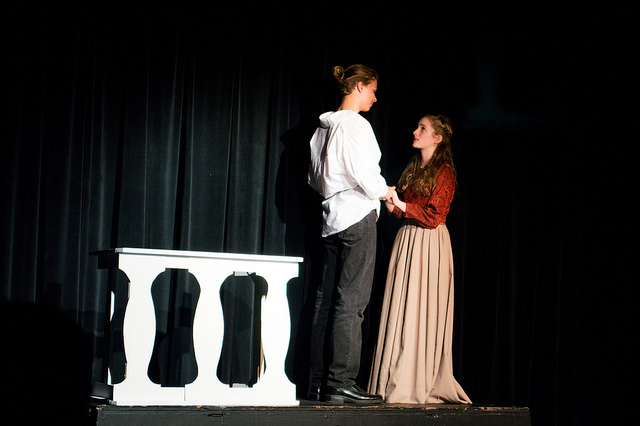
Photo by Fatima Ali.
The play process began with Nordyke being casted as a director of Romeo and Juliet, and even when she first got the role, she knew there would be a lot to do.
Nordyke had to begin casting first, starting the one-day audition process with a cold reading.
“We did cold readings, which are basically going up to the director and reading a small portion of a script that they give you,” sophomore Samantha Millar said.
Millar was one of many who chose to audition for the cold readings, and her only goal was to earn the part of Juliet.
“During the audition I felt really nervous, but afterwards I felt pretty good about it. I had always wanted to be Juliet, so there was a lot riding on that audition,” Millar said.
She was chosen to play Juliet, alongside sophomore Jeremi Kalkowski, who was playing Romeo. The cast began acting almost immediately, as they only had five weeks before the show. It didn’t take long for them to all get along.
“It was a good atmosphere, we never fought or anything. It was a good experience,” Kalkowski said.
Nordyke had a plan of action when it came to her ideals about how the play would go. She knew exactly what she envisioned the play to be and wasted no time planning the blueprint of the play.
Fast forwarding to show day, the two main actors of the show begin to start their ritual before a show, or lack thereof.
“Honestly, I don’t calm myself. I walk on stage completely stressed out. But then I need to get into the zone…and after a scene or two I’m completely fine,” Kalkowski said.
Millar takes a different approach when it comes to before the play.
The lights begin to dim. A single spotlight turns onto one of the cast members, who begins reciting her lines.
She leaves the scene and more of the cast comes on, setting the scene for the beginning of Romeo and Juliet. The town square, where the two houses, the Capulet and the Montagues fighting is the first scene that comes up. Two members of the cast takes out their swords and began to fight. The rest of the show goes smoothly with no mishaps, even in the intense sword fighting scenes with swords clanging from the sounds of real metal. When the show finishes, the last applause of the audience dies down and the actors all bow and sit down to answer questions. All the members of this play had come together to put a show on for the freshmen reading Romeo and Juliet, and they had succeeded in making it a great one.
“Our cast was really focused — especially during the play and after the play with the Q and A’s sessions at the end. This was an important factor when making a show,” Nordyke said. “Also, the Tech people helped out. I think that what makes a good show was all the people helping out and coming together as one.”
Take a look at the photos below to see photos during Romeo and Juliet.



